When 88 meant XOXO
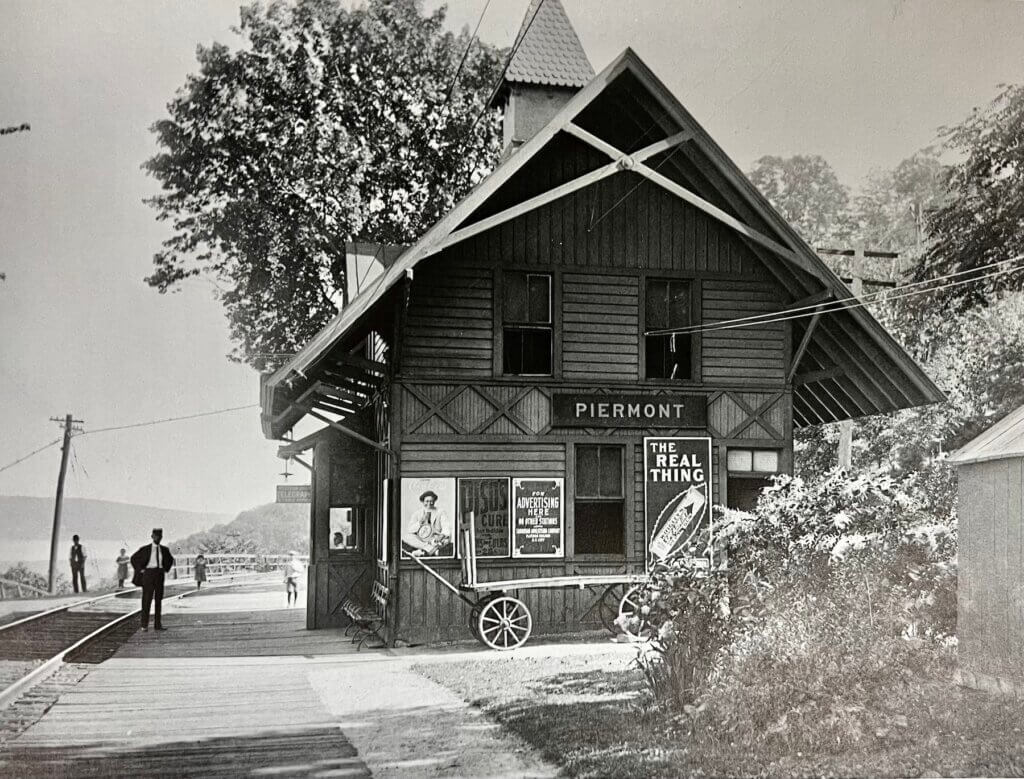
One hundred years before internet dating was invented, telegraph operators at the Nyack and Piermont train stations fell in love over the “wire”. Marian Belle Byram (known as Belle) and Thomas Kelly both started working as telegraph operators in 1908, Belle at the Piermont train station and Thomas at the Nyack train station.
They telegraphed each other every day about train schedules. One thing led to another, and given enough time, their online conversations turned into something more. Perhaps they started using one of the many telegraphic shorthand codes like “88” for love and kisses. They started dated and married in 1913.
The Erie Railroad
The Erie Railroad made Piermont an important train center. The brainchild of Eleazar Lord, the Erie Railroad created a quicker route from New York City to Lake Erie than the Erie Canal. Piermont was chosen as a start point because there was not then an agreement allowing trains to pass through New Jersey. Goods to and from New York City went by steamboat to Piermont Pier and by rail to Lake Erie.
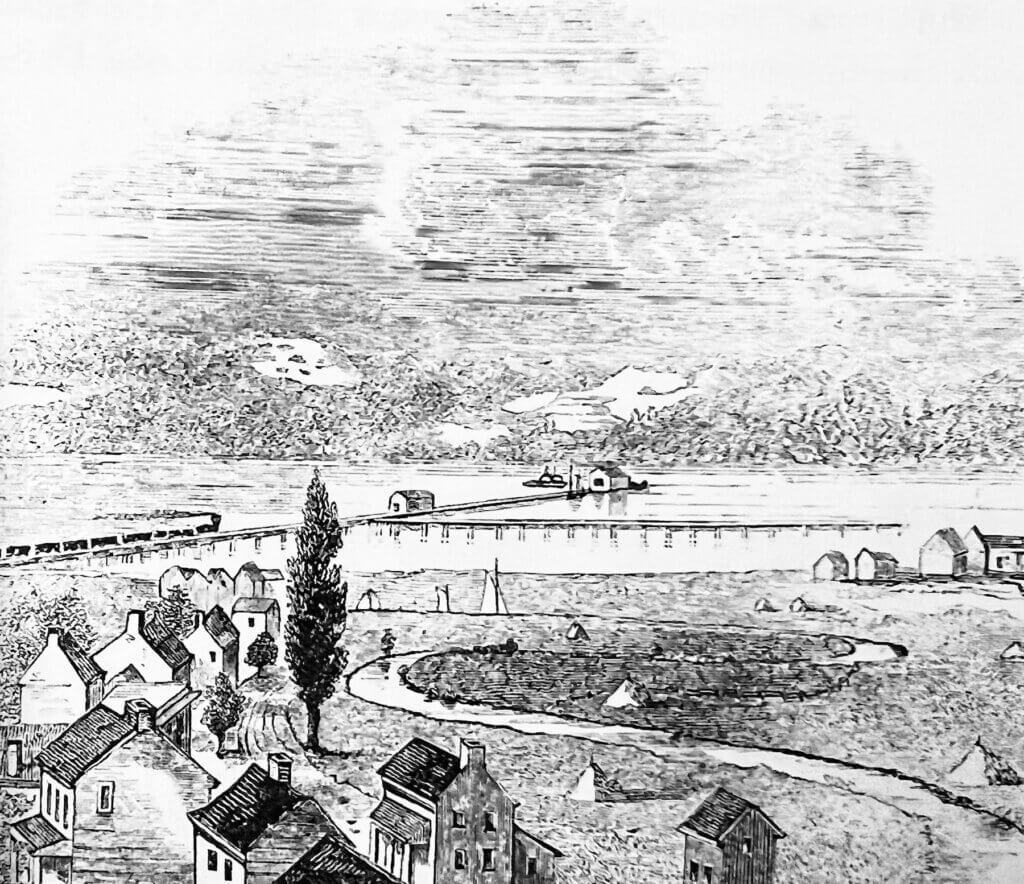
Rail construction started in Piermont around 1835. The section from Piermont to Goshen was complete by 1841.The entire Erie Railroad, then the longest railroad in America, opened end-to-end on May 14, 1851, with President Millard Fillmore riding in the inaugural trip.
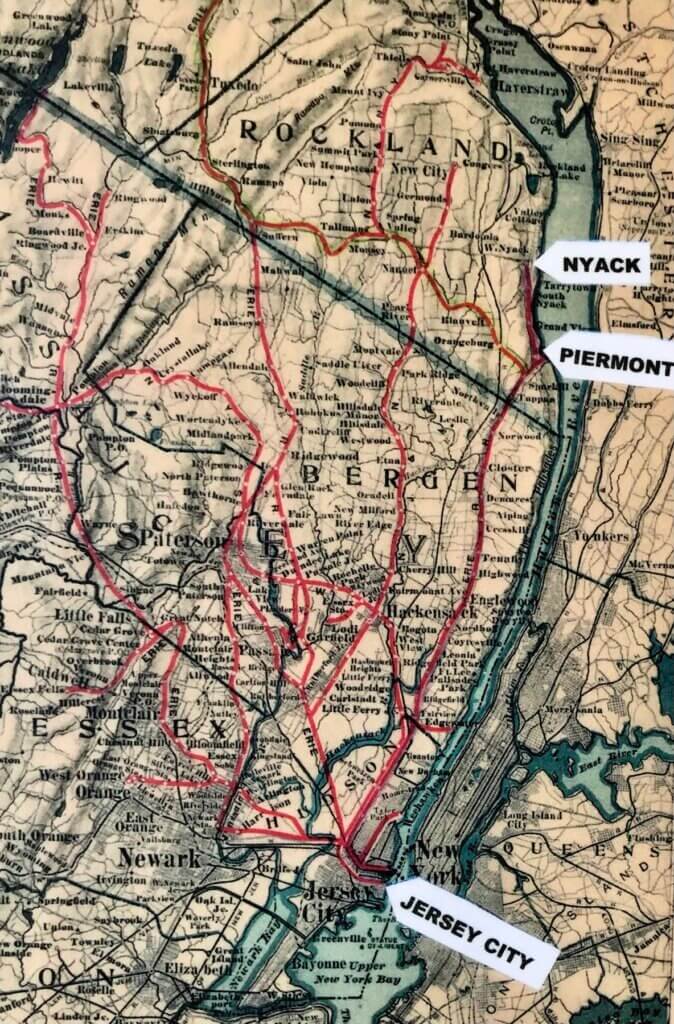
The Northern Railroad
By 1859, the Northern Railroad built a line connecting Sparkill with Jersey City, the problem of interstate transportation being resolved. A spur opened from Sparkill to Nyack in 1870. The Erie and Northern Railroad lines crossed in Sparkill. Today the Joseph Clarke Rail Trail follows the old Erie line.
New stations were built in Piermont, Grand View, South Nyack, and Nyack. Trains ran on a single track with trains being turned around for return trips in Nyack. While the train stations had copper wire for telephones, they used telegraphs almost exclusively for communication about track conditions and train locations.
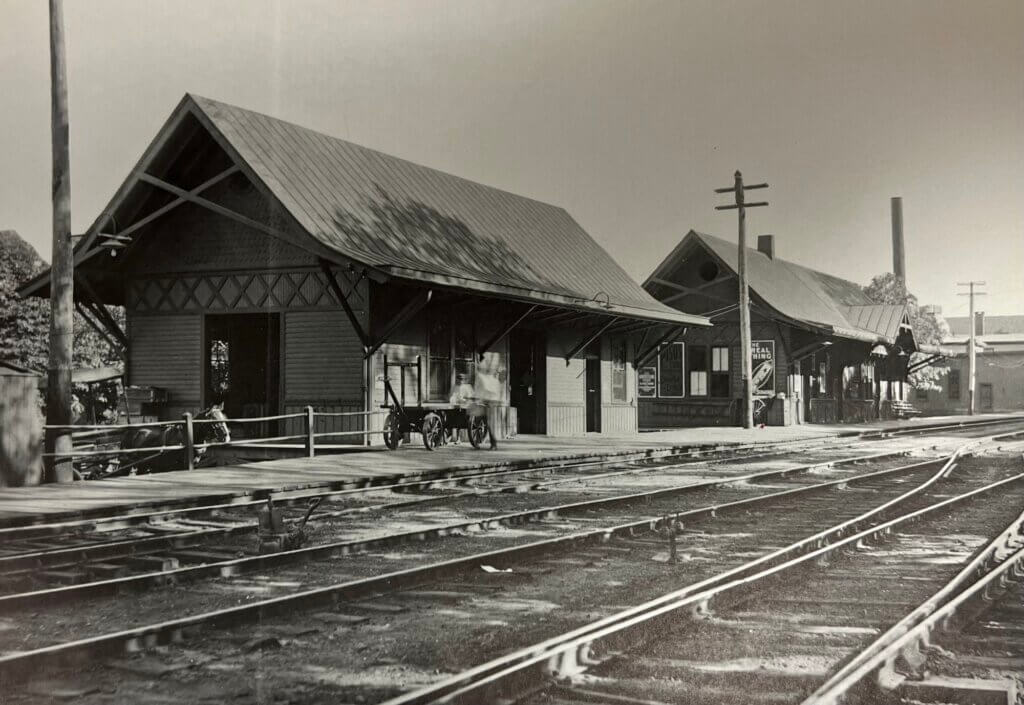



Piermont-on-the-Hill Station
The Piermont train station was first named Piermont-on-the-Hill to differentiate it from the Erie line Piermont station located just east of today’s town center. Built in 1883, Piermont-on-the-Hill replaced a bare platform installed in 1870.
The station was designed by M. W. DeBaun. It measured 20 x 30 feet with two stories and a steeply pitched roof. Two front doors graced the front of the building, one for men and one for women so that the sexes would not mingle in the waiting room, as was the custom of the time. The first floor contained the waiting room and ticket office. The second floor contained living quarters. The exterior was painted in French grey with olive trim. Isaac Van Wagner, an artist who ran a photographic studio in downtown Nyack, handled the landscaping.
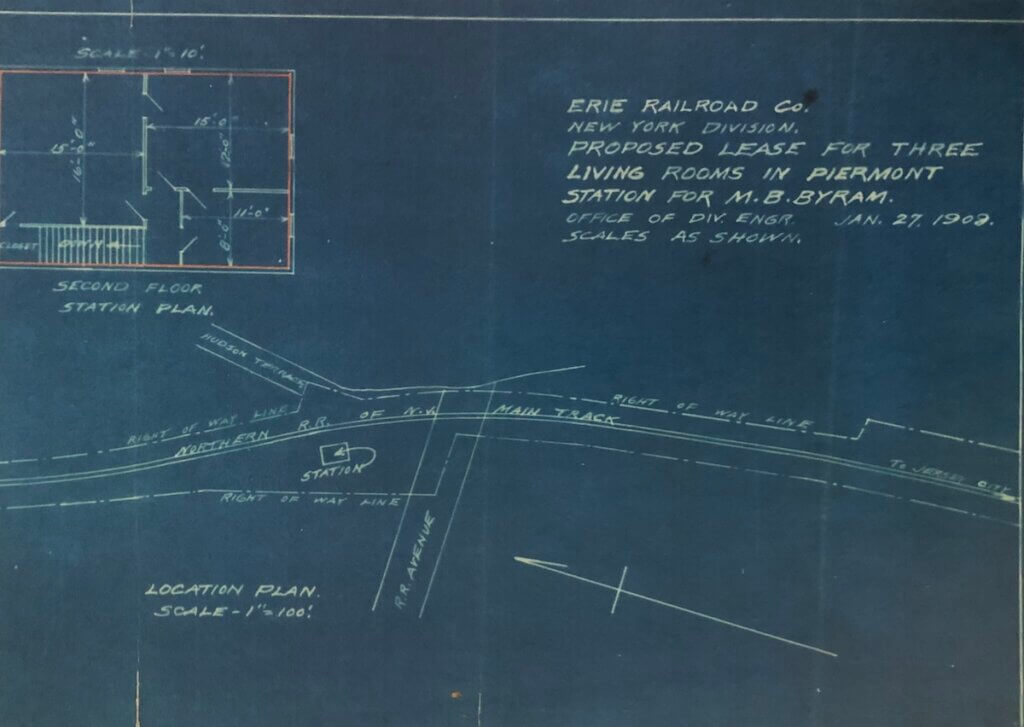
By the time Belle became telegraph operator and station manager, up to 43 passenger trains passed through the station every day. Belle handled two telegraph services at the station: Western Union and train communication. Her telegraph station was in the ticket booth.
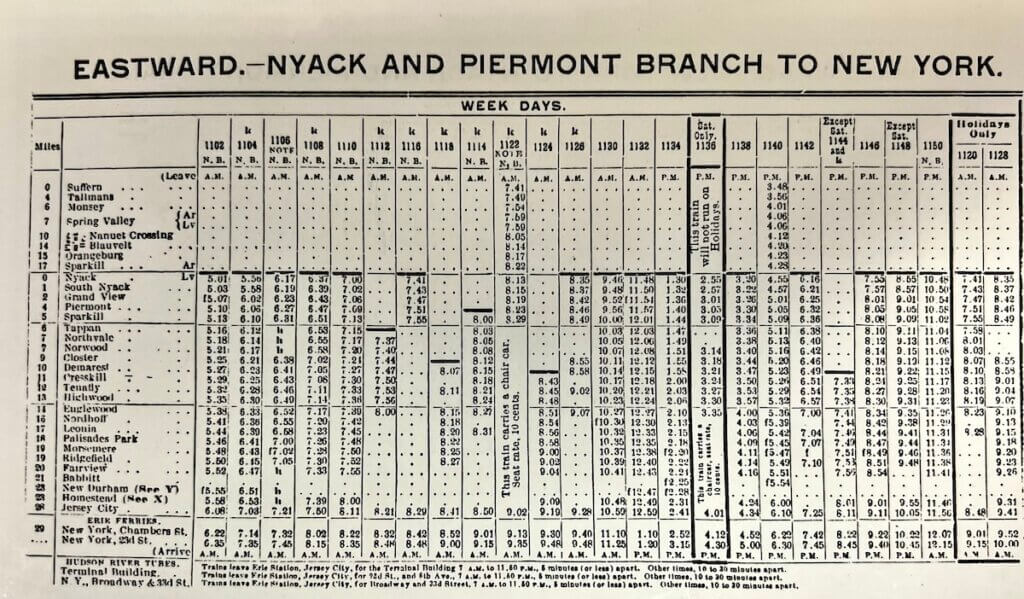
One of the main Western Union customers was the Piermont Paper Mill and Box Factory. Stacks of messages went back and forth through Belle’s station. Since Piermont had no newspaper, kids came to the station to get baseball scores. According to Belle Kelly, “On election night, the company would send a special operator up.”
Telegraphy
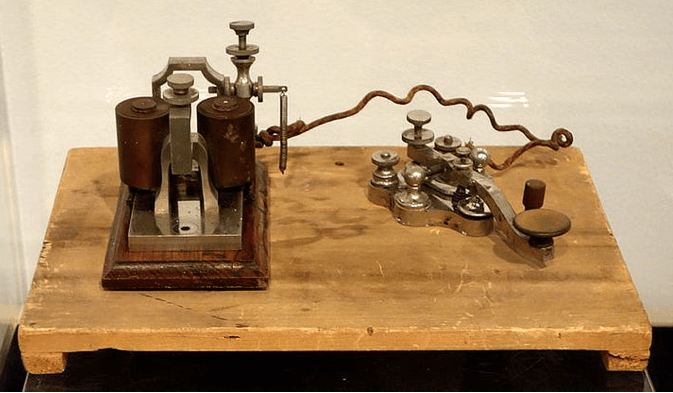
Telegraph operators spent much of their time wearing headphones to hear messages while near a telegraph key to reply in Morse code. A series of dots (short) and dashes (long; about the length of three dots) were used with pauses between words. As with today’s text messages, shortcuts were created to speed transmission and codified in the Phillips Code of 1849. For example, the code for the letter “E” was a single dot since it is the most used letter in the English alphabet. “WC” was the code for WILCO, or “message received, will comply.” Some letters signified words like “u” for you and “r” for are. Some codes like “haha” used for laughter are still used today.
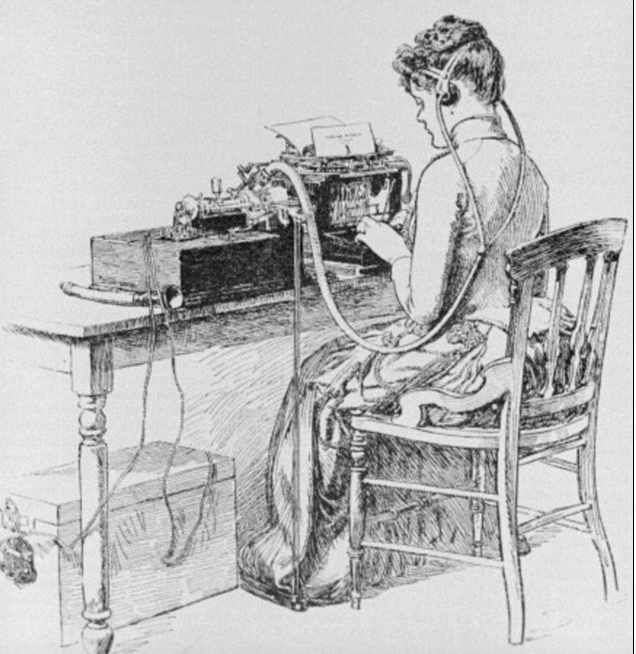
Every telegraph operator has a unique tempo and pacing in sending, called their “fist”, that can be recognized by other operators. In WWII, recognizing an operator’s “fist” was a way of determining if an operator was a spy or not.
Online Telegraph Romance, Victorian Style
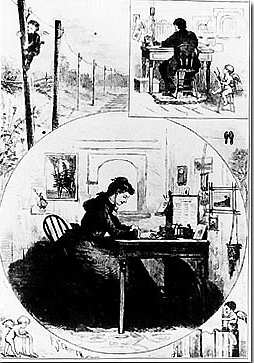

Online liaisons were first conceived, at least in fiction, as early as 1880. Ella Cheever Thayer, a telegraph operator and suffragette-inspired playwright and novelist, wrote a popular rom-com novel, Wired Love: A Romance of Dots and Dashes. In it, the two main characters find it is easier to speak over the wire than in person. At first, they don’t even know each other’s gender. Flirtation online became a true romance.
“There certainly is something romantic in talking to a mysterious person, unseen, and miles away!’ thought Nattie, as she put on her hat.”
Wired Love, Ella Cheever Thayer
In a prescient foreshadowing of mobile phones, one character even imagines that it would be easier “to carry something around in their pockets” that would allow messages to be sent or received.
Belle and Thomas

Thomas Kelly came from a railroad family who settled in Piermont when the Erie line and Western Union were both booming. Belle grew up in Watkins Glen, the daughter of Henry J. Byram and Mary Dowling. She “always liked telegraphy,” and once she finished telegraph school in Elmira, she got a job in Piermont on the Northern Railroad. Telegraphy was one of the first occupations open to women in the early 20th century, and Belle took full advantage of the opportunity.
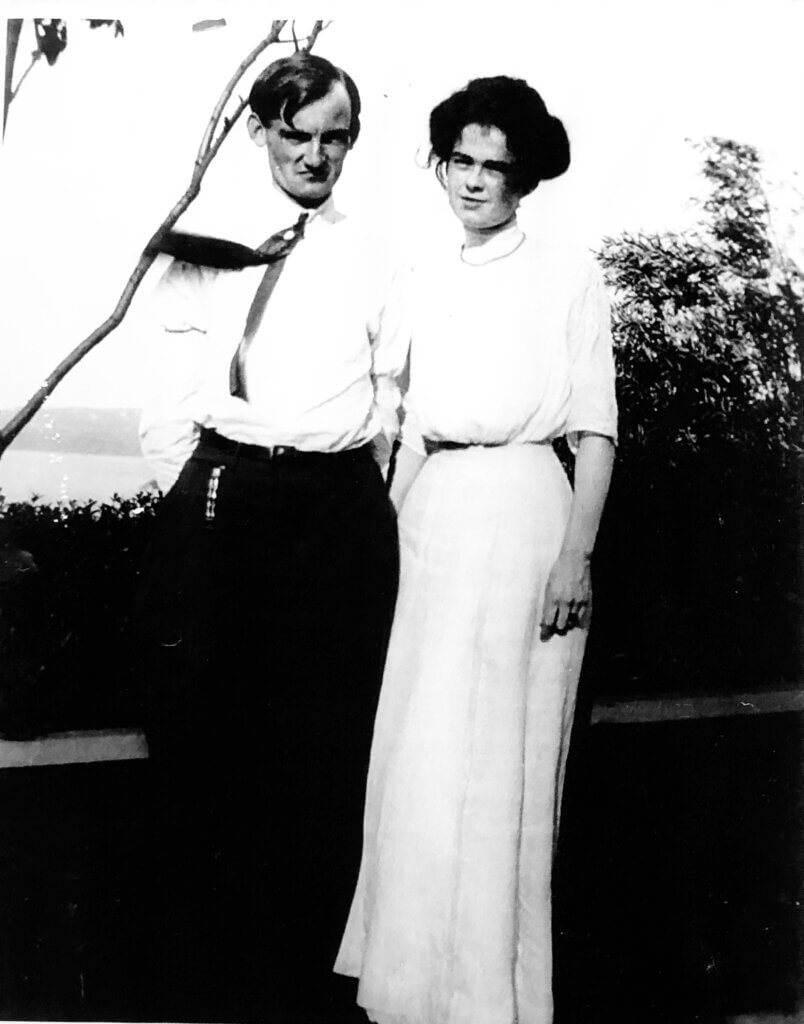
How exactly the two made contact online or met face-to-face is not recorded, but they surely recognized each other’s telegraphic “fist.” Presumably, Thomas was living in Piermont not far from Belle, so an in-person meeting was easily arranged. Their online communication bore actual fruit when they met, since they were married on March 26, 1913.
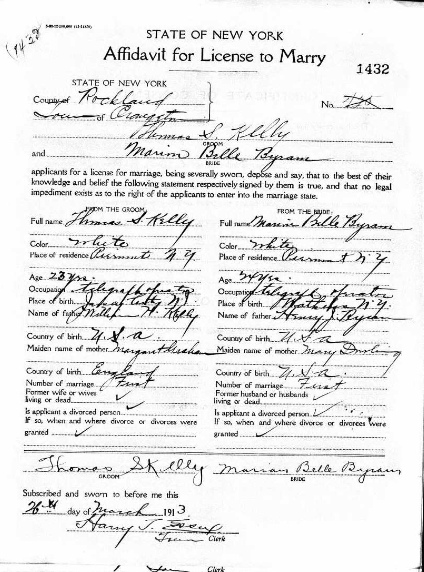
Life at the Piermont Station
Thomas transferred to the Piermont Station after they were married, sharing the work and the upstairs apartment. They had a son, Thomas Jr., in 1915. Their jobs were 24/7. In the early days of the 20th century, the station had no running water. Young Thomas remembered coming home from school “to make kindling and haul water from a nearby house.” As station managers, Belle and Thomas were responsible for selling tickets and keeping track of incoming and outgoing baggage, including for many who visited the Fort Comfort Resort in Piermont.
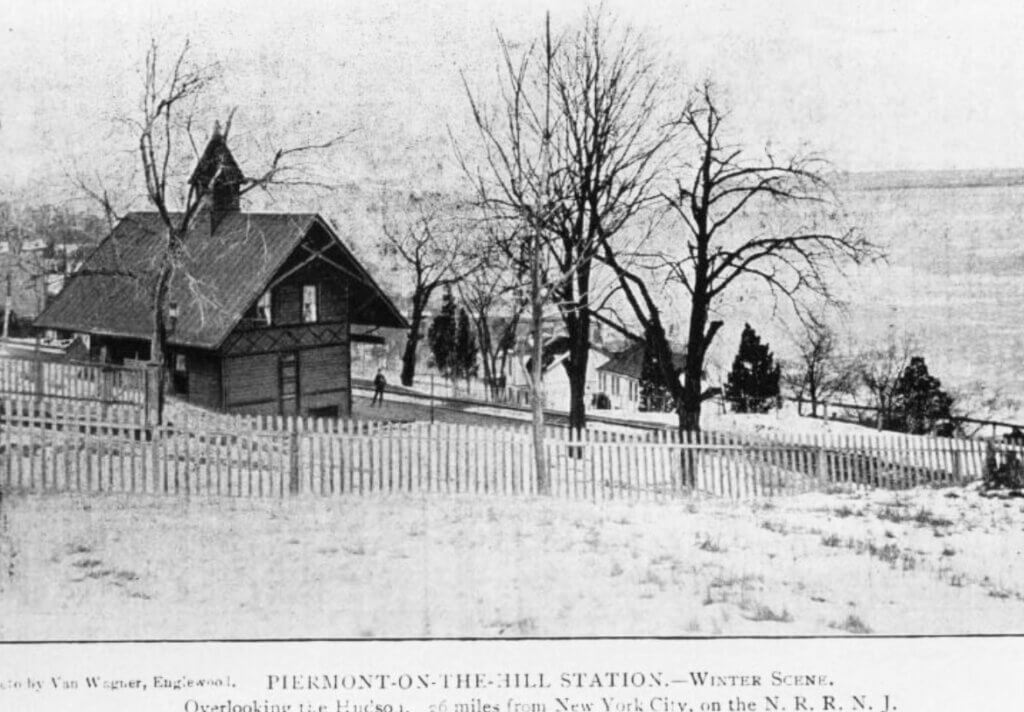
The couple were noted for preventing a train wreck when Thomas noticed that an inexperienced operator had sent a 12-car passenger train southbound on a collision course with a northbound train. The two went out, one in each direction, to flag down the trains and avert a collision.
Robbery at the Piermont Station
In May of 1913, two months after Belle and Tom were married, Alfred Banker of Bridge Street, in Nyack, was seen in local saloons spending money that others thought the father of two children didn’t have. In fact, Banker and Frank Smith, who had been arrested for robbery once before, were soon arrested for robbing the Piermont station.
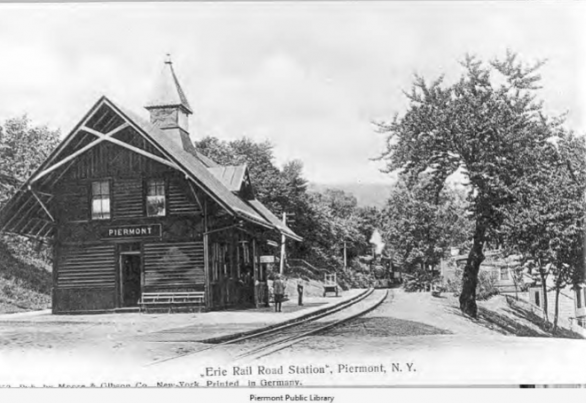
Belle had visited Thomas in Nyack and returned to her apartment by a late train, finding her apartment broken into and robbed during her absence. She reported the robbery to Officer Hickey who learned the two men had been in Piermont that evening. By midnight, the two were arrested, pled guilty, and returned the money. Smith had been arrested a few weeks before after robbing the station and stealing some $20.
A Sad Ending, a Reunion, & a Renovation
Unfortunately, the marriage kindled by an online romance did not last long. Thomas died as a young man of 30. Belle and her son Tom continued to live in the station house while Belle worked as station agent and telegraph operator. In the late 1930s, she transferred to the Englewood station on the Erie line and then worked for 19 years at the Rutherford, NJ station.
In 1966, the Northern Railroad line to Nyack was shut down and the tracks were taken up. The Piermont station was empty. In 1969, Belle and the younger Tom Kelly rented the empty train station, never having lost their affinity for another time. Belle purchased the station in 1971 and transferred full ownership to Tom in 1974. Tom renovated the downstairs waiting room for his aging mother. Belle lived there until she died in May of 1976.

Tom lived in the station house until he died in 1996. The station was purchased by the Village of Piermont in 2006. The Piermont Historical Society completed a masterful renovation of the station. Their museum is now housed in the station. The renovated station is the lone surviving station of the old Northern Railroad that once carried so many people from the riverside villages to New York City. A walking path along the old trail line begins with Nyack’s Esposito Trail and passes the Piermont station.
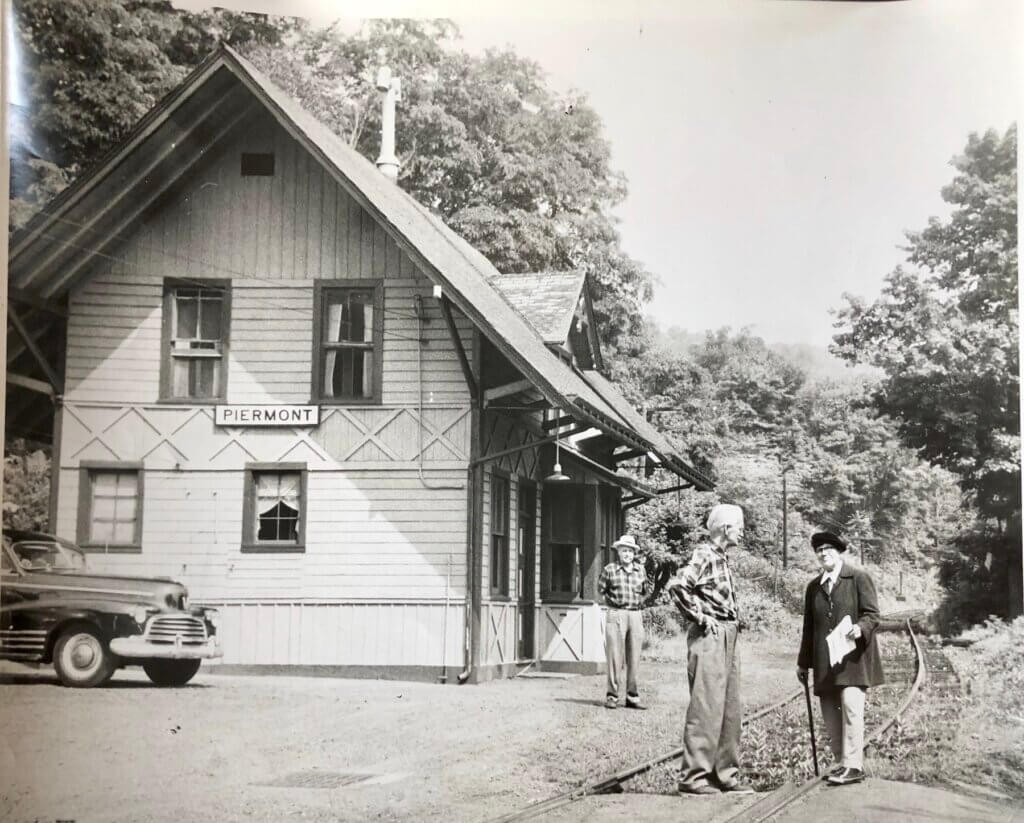
A Lasting Romance
In today’s world, we may think we discovered pretty much everything, including online dating. Technologies come and go but love remains forever. Our very own early Orangetown romance between Belle and Thomas brought a wired cupid to our county. Their romance became forever linked to Piermont, telegraphy, and the railroad. The lovingly renovated Piermont train station is a fit memorial to their online romance.
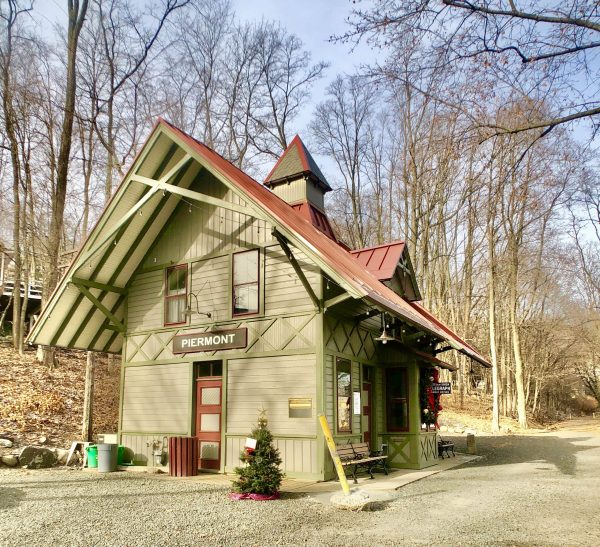

An earlier version of this article first published as Nyack People & Places: Orangetown’s First Online Romance, February 6, 2020
Michael Hays is a 36-year resident of the Nyacks. Hays grew up the son of a professor and nurse in Champaign, Illinois. He has recently retired from a long career in educational publishing with Prentice-Hall and McGraw-Hill. He is an avid cyclist, amateur historian and photographer, gardener, and dog walker. Hays has enjoyed more years than he cares to count with his beautiful companion, Bernie Richey. You can follow him on Instagram as UpperNyackMike








